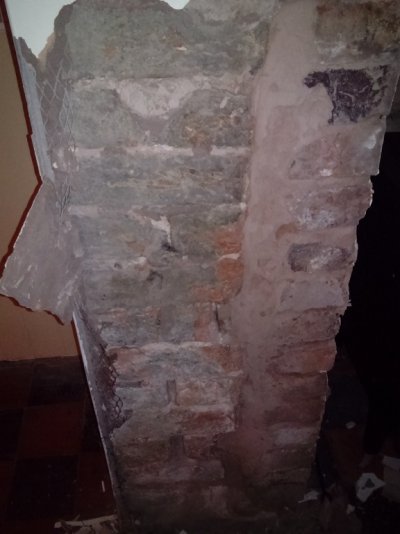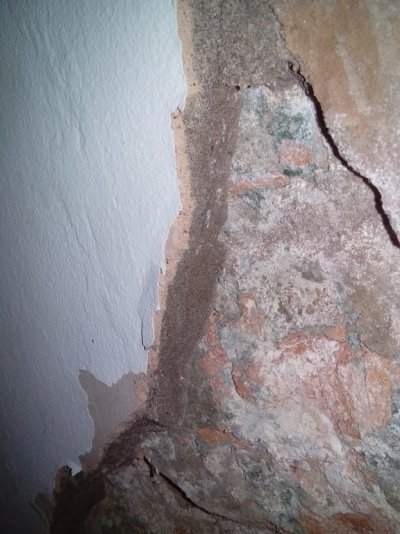Cheshirecat44
Member
- Messages
- 2
Hi everyone!
We have recently moved house. Our new house is real mix of ages due to several extensions, but the oldest part (part of the lounge and room above) is pre 1840 ish.
We have some damp in the chimney in the lounge, which we are getting sorted. Part of the chimney is plastered with modern plaster and part is brick painted with modern paint. As the damp had damaged both finishes, and assuming it was the original brick beneath it all, we started to pull off some of the plaster with the aim of replacing it with lime plaster.
However, we found a couple of unexpected things:
First, only part of the brick is original. It seems an additional course has been added with lots of cement - see pic. So now I'm not sure if there is any point in replacing the plaster with lime plaster...

Secondly, beneath the plaster that is covering the original brick, there is also a fairly thick layer of a hard black material. Not sure what this is. My husband thought it looked like some kind of cement? Beneath this, we discovered that the original bricks have a patchy green substance on them, you can see this on the pic above and a close-up shown on the pic below, also showing the black layer.
At first we thought the green was a mould, but as we uncovered a bit more it looked more like a patchy paint. Am I right in thinking that this may be an arsenic-based paint based on the age of this section of the house? If, so what is the best way to get this off safely?

Thank you for any input!
We have recently moved house. Our new house is real mix of ages due to several extensions, but the oldest part (part of the lounge and room above) is pre 1840 ish.
We have some damp in the chimney in the lounge, which we are getting sorted. Part of the chimney is plastered with modern plaster and part is brick painted with modern paint. As the damp had damaged both finishes, and assuming it was the original brick beneath it all, we started to pull off some of the plaster with the aim of replacing it with lime plaster.
However, we found a couple of unexpected things:
First, only part of the brick is original. It seems an additional course has been added with lots of cement - see pic. So now I'm not sure if there is any point in replacing the plaster with lime plaster...

Secondly, beneath the plaster that is covering the original brick, there is also a fairly thick layer of a hard black material. Not sure what this is. My husband thought it looked like some kind of cement? Beneath this, we discovered that the original bricks have a patchy green substance on them, you can see this on the pic above and a close-up shown on the pic below, also showing the black layer.
At first we thought the green was a mould, but as we uncovered a bit more it looked more like a patchy paint. Am I right in thinking that this may be an arsenic-based paint based on the age of this section of the house? If, so what is the best way to get this off safely?

Thank you for any input!
